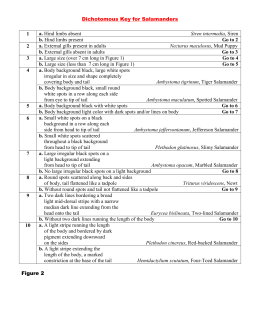Using Dichotomous Key to Identify Sharks
※ Download: Taxonomy classification and dichotomous keys answers
At this point it is valid to remind students of the definition of a which is a group of organisms that look alike and can interbreed under natural conditions to produce fertile offspring and which can only breed with members of their own species. Then they will start over with another organism or picture on the page. He used the genus and species to give each species its own name and called this binomial nomenclature.

Later, during the 17th century a Swedish botanist named Carl Linnaeus feverishly studied all there was to know about plants eventually developing a classification system to apply names to plants and animals. Students will understand and apply the binomial nomenclature system of Linnaeus. Tell students to follow the directions below until they have completed the dichotomous key.

Fun with Taxonomy and Dichotomous Keys - Where do Domains fit in the Taxonomy levels?

A Key to New Pamishan 1. The creature has a large wide head............................ The creature has a small narrow head.......................... It has 3 eyes................................................ It has 2 eyes................................................ There is a star in the middle of its chest.................... There is no star in the middle of its chest.................. The creature has hair spikes................................. The creature has no hair spikes............................... The bottom of the creature is arch-shaped.................... The bottom of the creature is M-shaped....................... The creature has an arch-shaped bottom....................... The creature has an M-shaped bottom........................... The creature has hairy spikes................................ The creature has no spikes.................................... There is a star in the middle of its body.................... The is no star in the middle of its body..................... The creature has an arch shaped bottom....................... The creature has an M shaped bottum.......................... The body is symmetrical...................................... The body is not symmetrical................................... The creatrue has no antennae................................. The creature has antennae.................................... There are spikes on the face................................. There are no spikes on the face.............................. The creature has no spike anywhere........................... There are spikes on the right leg............................ The creature has 2 eyes....................................... The creature has 1 eye........................................ The creature has a mouth...................................... The creature has no mouth..................................... There are spikes on the left leg............................. There are no spikes at all................................... The creature has spikes...................................... The creature has no spikes................................... There are spikes on the head................................. There are spikes on the right leg............................. There are spikes covering the face........................... There are spikes only on the outside edge of head............
Allotting them 10 minutes, provide them with a blank sheet of large chart paper and a marker. For additional practice, have the class create a dichotomous key for the people in the class or their shoes. In this unit phylogenic trees are not emphasized rather dichotomous keys are. Create a dichotomous key and give scientific names to creatures or organisms. So that people from other countries who spoke different languages could communicate about a specific organism. The is no star in the middle of its body. Caudal fin very long, almost as long as the entire body Family B Caudal fin length much less than length of entire body Go to statement 10 10 A Nose with long needlelike point on end Family Scapanorhynchidae B A light stripe extending the length of the body, a marked constriction at the base of the tail Go to statement 11 11 A Anal fin absent Family B Anal fin present Family 12 A Small dorsal taxonomy classification and dichotomous keys answers present near tip of tail Family B Small dorsal fin absent near tip of tail Go to statement 13 13 A Hornlike appendages at front of shark Family B Hornlike appendages not present at front of shark Family Conclusion 1. Why teach our students about this process. Continue using the key, always starting back at Statement 1a and 1b for each shark until all have been identified. The creature has an M-shaped bottom. Note: At this point remind them when doing this activity maturity is a must and to be respectful of appropriate terms and language. I hope you have found it resourceful and will not only be able to use its content but build upon it and produce your own interesting and engaging ways in which to teach taxonomy and dichotomous keys!.



